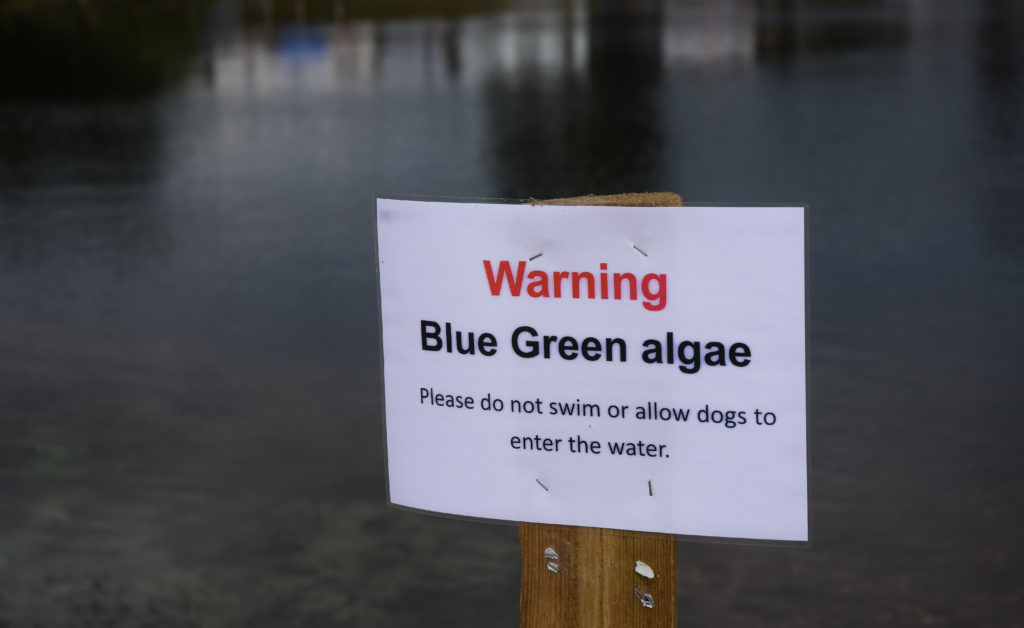Herbicide-free algae control
Ultrasonic technology keeps the blooms at bay
Algae blooms can be a big problem, especially for those in the wine industry. Runoff containing fertilizer from the vineyard or nutrients from wine production can wash into your surface water and cause an microbiological explosion. It’s hazardous to your health, it kills off other aquatic life, and it’s icky. Winery-goers aren’t going to Instagram an algae bloom.
Existing methods of algae control include airbubblers and good old-fashioned herbicide. The former doesn’t really kill the algae, but rather just moves it around. The latter, well, no one likes to use herbicide any more than they have to. That’s why I was intrigued to hear about WaterIQ, a new company that offers an herbicide-free way to manage algae infestation in surface water. I thought our readers might be interested too! So go ahead and check out this interview I did with Lawrence Field, the CEO of WaterIQ:
So, Lawrence, how did this whole project get started?
I founded Water IQ Technologies a year ago. My background was in the pipeline inspection business for 20 something years. And we inspected pipelines for Pacific Gas and Electric all the way to large interstate pipelines that transport either oil or gas or liquids. There we used ultrasonic technology to inspect the pipelines to look for anomalies in the pipelines.
I was semi-retired, living in Jackson Hole, Wyoming and Palm Desert. I’m a golfer and I found this device on a golf course in Jackson Hole and talked to our Superintendent. He told me about he couldn’t use chemicals because the golf course is taking water from the Snake River. To get the permits to build a course, the water had to be at least as good going back out as it was coming in.
So he introduced me to this technology and I dug around and found out that there were some improvements that needed to be made. I spent a little over a year with some chemical engineers, limnologists, and acoustical engineers and came out with a product that we introduced last October that kills algae using ultrasonic frequencies. I spent a lot of money to upgrade the technology and started Water IQ. Our primary markets are drinking water utilities and wastewater treatment plants that have a serious need to make sure their water complies with all sorts of state and federal regulations. But we also have the same technology in a smaller, more affordable unit for agriculture.
Central Valley almond growers and pistachio growers for instance might have 640 acres with a 1-acre irrigation pond and it has algae. Because I happen to be passionate about wine, we introduced our product this past year at the Sonoma Line Show and then at California Unified. Typically, wineries use aeration, which is good to move water around, but it doesn’t kill algae.
So anyway, I started the company as a more of a passion, but I also felt there was a huge market opportunity. Now we are getting calls from around the world asking for a chemical free solution to treat algae.
That sounds like it fits in with the wine industry’s movement towards sustainability.
I think about using copper sulfate to kill algae is a real problem. It might get rid of algae in the short term, but it’s almost like getting a cancer treatment. It kills other things also. It settles into the bottom of a pond and kills all sorts of beneficial bacteria. Over time, it can destroy the water feature.
In short, I got involved because I saw the technology on a golf course and was fascinated with it. Now I’m spending 24 hours a day and helping people kill algae without using chemicals.
Does it kill anything besides algae? A lot of our clients deal with duckweed. Is this technology algae-specific?
It is algae specific. I’d love to be able to kill red tide, for example. There are plants like duckweed that can be an issue in irrigation ponds and vineyards. But our product uses a technology that only targets green and blue-green algae.

So how does the technology work?
These units have a device in them that, when charged with the right current, emits frequencies. It was discovered that if you have frequencies between 20 kHz and 2000 kHz at the exact right decibel level, it will rupture the inside of the algae, something called a gas vesicle. One analogy would be if an opera singer suddenly hits the right pitch and crystal starts to vibrate and then shatter. It’s the same thing and that’s actually called “critical structural resonance”. Our technology emits these frequencies, and it causes the inside of the algae, the gas vesicle, to collapse and the algae then sinks to the bottom of the lake or pond. For algae to survive, it needs to have photosynthesis.
When you have a lot of runoff from agriculture, fertilizers get into reservoirs, lakes, ponds, etc. When you have excess nitrogen and phosphorus and you add a little bit of warm temperature and then sunlight, you can create algae blooms. That’s what’s happening in California and around the world. It’s called nutrient pollution.
Can you break down algae for a second? Why should we be worried about it?
There’s green algae and blue-green algae. Blue-green algae is toxic. That’s where you’ll see signs. In Northern California you’ve got Clear Lake, Russian River, Napa River, and Lake Hennessy that have severe algae issues. Clear Lake for instance is a source for a lot of drinking water utilities. You better not swim in Clear Lake. It’s filled with blue-green algae that releases toxins. It’s harmful for humans. It kills dogs too.
Green algae is just a nuisance. It’s different. And a lot of the algae are filamentous, and they look almost like it can be like a duckweed, but they grow in colonies, and they’re not toxic, but they’re really cause odor issues. It will take up all the oxygen and is very harmful to a body of water.

What’s the coverage of these units? How many do you think you would need to keep say, Lake Hennessy, from getting an algae bloom.
We already measured it.
Ha. Of course.
Our radius for blue-green algae is 400 meters. Think of it as a complete 360 degree radius. For green algae, we can kill up to 120 meters. In the case of vineyards, most vineyard ponds are less than an acre. So one of our units will easily take care of any irrigation pond or wastewater treatment pond. It sits in the middle of the pond and radiates out to the side and kills the algae. For blue green algae, it takes three to four days. We leave it on 24 hours, just plug it in and it sits there. There’s really very little maintenance.
Is there anything else that can hear this? Would a dog, for example, be able to pick up on the frequency?
Well, you asked a question, does it kill anything else? It doesn’t. We’ve done studies with the University of Florida to make sure zooplankton isn’t killed. Fish don’t get bothered by it. That’s one of the nice things, again, as opposed to using an algaecide. The reason why zooplankton is important is that it along with other bacteria are the beginning of a food chain in a water column.
Well thank you so much for sitting down to talk about this new technology. I really appreciate it.
Of course. Thank you.
Interested to know more? Check out their website or contact loni@advancedvit.com to discuss your project ideas.

